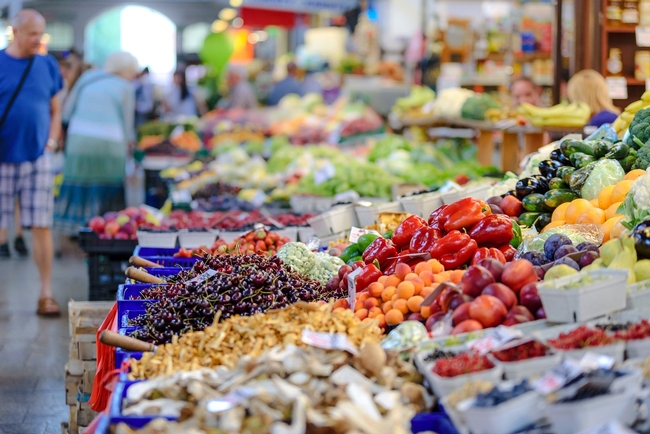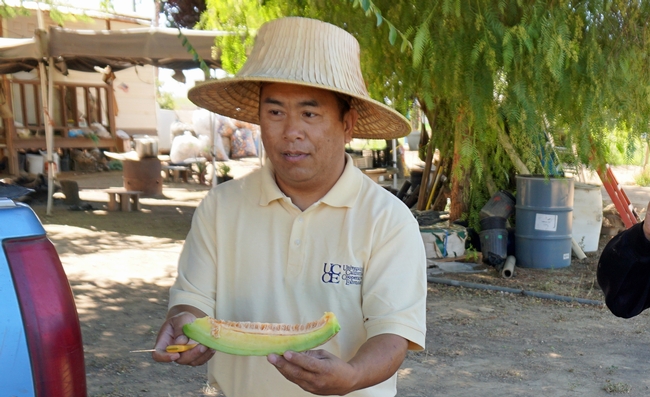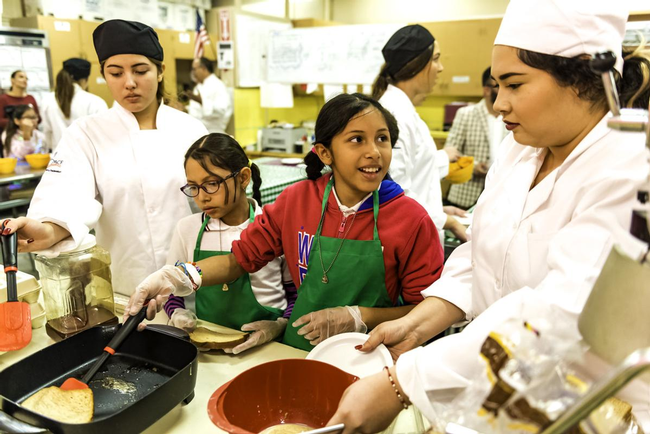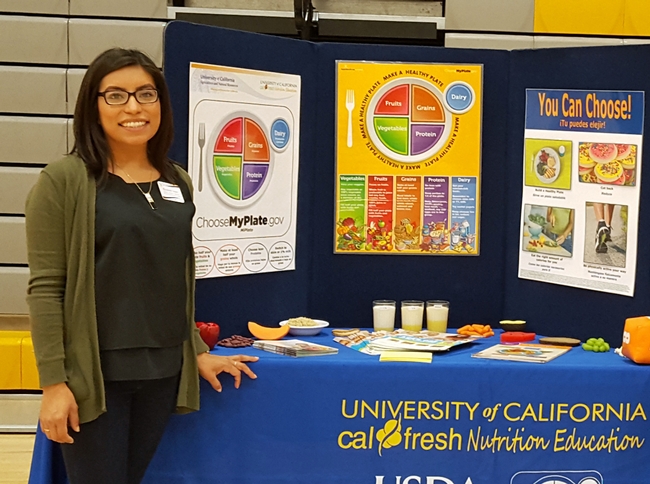Posts Tagged: food
Empty store shelves are not a sign of impending disaster
Panic-buying groceries and hoarding food in homes is impacting the U.S. supply chain and putting a strain on low-income families who don't have the financial ability to spend hundreds of dollars on groceries at once, reported Ganda Suthivarakom in the New York Times.
“That is probably about half of us, especially during this time when many of us are not working or can't work, with limited incomes or no incomes coming in,” said Lorrene Ritchie, director of the UC Agriculture and Natural Resources' Nutrition Policy Institute. “The last thing a family in that situation can do is go out and spend $500 on groceries.”
The Times article suggests consumers think about others when they shop, use food they already have in their freezers and pantries, and help people who can't afford to stockpile.
“The food banks, your local food pantry, are experiencing shortages of people to work and put packages of food together. Often that can happen in a safe way with social distancing,” Ritchie said.
If some grocery store shelves are empty, it doesn't mean the U.S. food supply is endangered, reported Ezra David Romero on the Capitol Public Radio website.
“Agriculture is resilient to shocks,” said Dan Sumner, director of the UC Agricultural Issues Center, a UC ANR program. “Consumers can be confident that the food is safe and plentiful. That doesn't mean every product is going to be there all the time.”
But as the pandemic lingers, some products could be harder to find if they're from a part of the world hard hit by COVID-19, Sumner said. As demand is down for certain goods, it could mean “somewhat lower prices. But I expect it will be relatively modest for food. What I mean by that is we're going to continue to eat.”
The article recommends against hoarding and assures that there will be a sufficient supply of food in stores and restaurants.
“You don't need to over buy; it's important to know that our supply chain is safe and plentiful,” said Ron Fong, with the California Grocers Association.
Romero also spoke with UC Cooperative Extension field crops and pest management advisor Rachael Long. She said it's fairly easy for farmers and workers to follow social distance rules, in part because of mechanization.
“You've got a ton of equipment, so it's not like there's a ton of people out there working together on growing the crops,” Long said. “You've got tractors and cultivators that are doing a lot of this work right now.”
Rainy winter is good news for Central Valley strawberries
Abundant rainfall in January and February 2019 bodes well for the forthcoming Central Valley strawberry season, reported Reuben Contreras on ABC Channel 30 Action News in Fresno.
Contreras interviewed Michael Yang, small farms and specialty crops Hmong agricultural assistant with UC Cooperative Extension.
"We need the water as much as we can right now," Yang said. He said the rain will add to the groundwater supply most farmers use to grow their crops, plus it will make the strawberries sweeter.
Cool weather is also welcome.
"Strawberries need cool weather but in the summer, the hot weather with the variety strawberries will not survive the heat," he said.
In the San Joaquin Valley, strawberries are picked from late March to early June. If the wet weather pattern established in January and February continues through the spring, that could spell trouble for strawberry farmers. Wet strawberries can rot in the field.
Ventura farming thrives with community support
Only an hour north of Los Angeles, one of the nation's highest-populated metropolitan centers, a vibrant farming community is actively producing millions of dollars in agricultural crops, reported Teresa O'Conner on KCET.org.
O'Conner's article features Ventura County, where farms continue to prosper despite natural disasters, encroaching housing developments, drought conditions and global competition. About $259 million worth of lemons were sold in 2017, making the citrus fruit the number-two crop for the county. The top spot belongs to strawberries at $654 million. Celery, nursery stock, raspberries, avocados, cut flowers, tomatoes, peppers and cabbage round out the rest of top ten crops. Ventura County boasts 20 additional million-dollar crops, ranging from kale, blueberries, Asian vegetables and oranges to cucumbers, spinach and lettuce.
One reason for the Ventura County agricultural industry's success is the support it enjoys from local residents. A county-wide grassroots initiative called SOAR (Save Open Space and Agricultural Resources) led to legislation that “requires a majority vote of the people in order to rezone unincorporated open space, agricultural or rural land for development." Voter-approved SOAR initiatives have been passed by the cities of Camarillo, Fillmore, Moorpark, Oxnard, Santa Paula, Simi Valley, Thousand Oaks and Ventura.
O'Conner spoke to UC Cooperative Extension advisor in digital communications Rose Hayden-Smith, editor of the UC Food Observer blog, about the connection between community food systems, the health of individuals and the survival of local farms.
“Everyone eats: everyone is a stakeholder,” Hayden-Smith said. “I would like people to be engaged with the food system, and to advocate for positive change. Think about where your food comes from and ask critical questions about the supply chain. Meet people who are involved in producing, processing, distributing and preparing the food you eat. Honor them with questions about and interest in their work.”
Youngsters learn cooking from 4-H teens in Imperial County
Two UC Cooperative Extension programs - 4-H Youth Development and UC CalFresh nutrition education - collaborate to give Imperial County elementary school students an introduction to the culinary arts, reported Vincent Osuna in the Imperial Valley Press.
The 4-H Teens-As-Teachers Cooking Academy runs seven sessions in which the high school students use evidence-based curriculum from 4-H to teach the elementary school students how to cook.
"I think this is a really good experience for the kids because it shows them the pathways that are here at the high school that could lead them into their future," said a Calexico High School senior Nelly Rodriguez, who serves as an academy teacher. "It gets them a start way ahead of what we got, because we started in ninth grade, and they get to start young in elementary."
A 4-H mini-grant funded equipment, aprons, skillets and other materials; UC CalFresh provides the food ingredients.
"It's to basically teach kids how to cook, but also just to empower them to help them feel like they have a little more control over their food," said Chris Wong, UCCE Imperal County community education specialist. "At the same time, it serves purpose to the high school culinary class because it professionally develops them for their food demos and their competitions at the end of the year."
4-H teen teacher Julio Ramirez said the young students were nervous at first, but by the fourth session, "They're anxious to do it. It's just a good thing to see."
Keep food safe with advice from UC CalFresh
Always be mindful of the time when food is outside a refrigerator or freezer. Typically, it should be no longer than two hours, and just one hour in the summertime, according to UC Cooperative Extension UC CalFresh nutrition program coordinator Elizabeth Lopez in an appearance on the Valley Pubic Television program Valley's Gold. (The food safety segment begins at the 18:30 mark.)
Lopez recommends using an insulated grocery bag with a frozen ice pack for the trip home from the store, and refrigerating leftovers in sealed containers soon after finishing a meal to maintain food safety.
The UC Cooperative Extension nutrition educator also provided cooking tips with program host Ryan Jacobson, the director of the Fresno County Farm Bureau. Lopez noted:
- Before beginning, wash hands with warm water and soap for 20 seconds.
- Make sure the food preparation area is clean.
- Designate certain cutting boards for fruit and vegetables, and others for meat and poultry.
- Wash fruit and vegetables under cool running water. No detergent is needed. Read the labels on pre-bagged produce. Some are ready to use, some need to be washed.
- Use a meat thermometer. Cook beef, pork and lamb to an internal temperature of 145 degrees F. Ground meats should be cooked to 160 degrees F. Poultry, whole or ground, should be cooked to 165 degrees F.
For more information, Lopez suggested consumers consult the USDA's Food Safety.gov website or Food Keeper app, available free in the app store.





